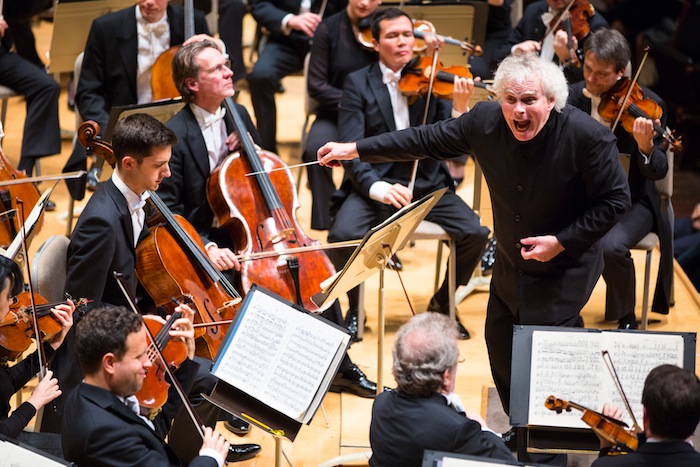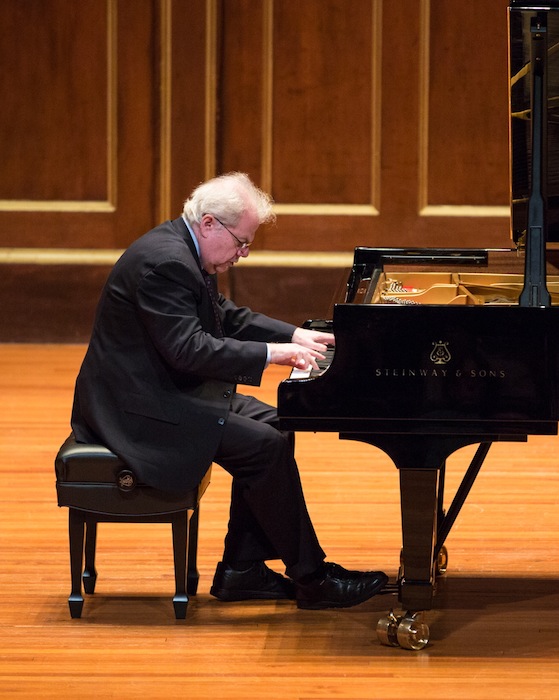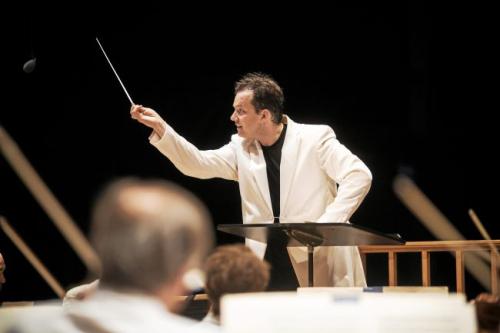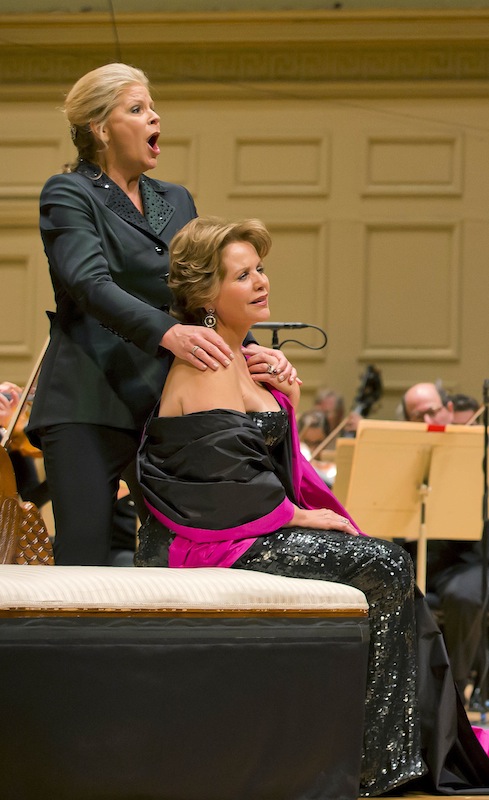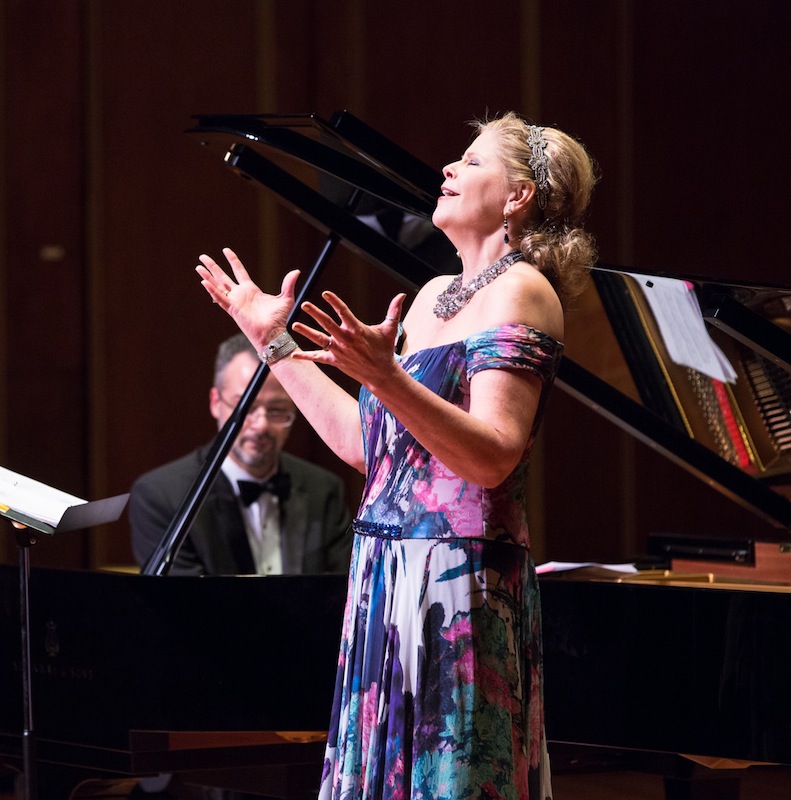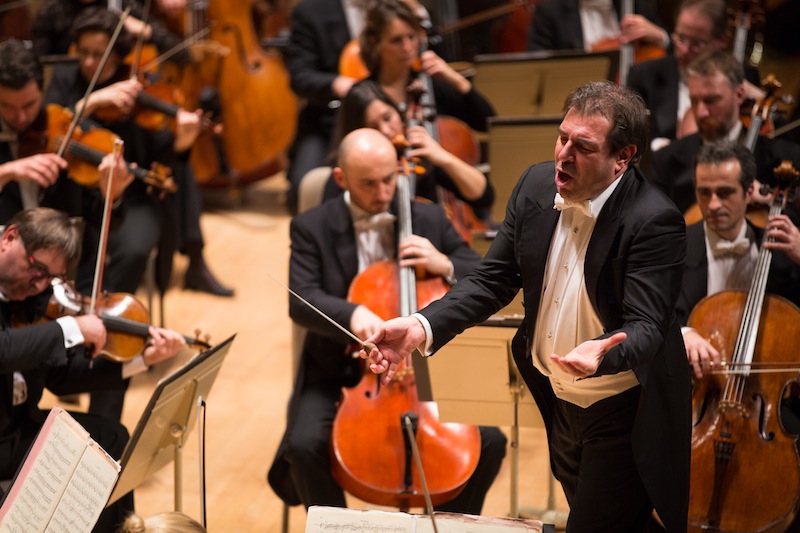Top Ten Performances of 2016
1. Simon Rattle and the Berlin Philharmonic—Celebrity Series
Bostonians were treated to the crème de la crème of international orchestras in November when Simon Rattle led his final Boston concert with the Berlin Philharmonic in captivating performances of Boulez’s Éclat and Mahler’s Seventh Symphony. (AK)
2. Emanuel Ax performing Beethoven–Celebrity Series
Take an athlete’s reflexes, a singer’s way with a phrase, and an architect’s sense of line and proportion, put them all together, and you have Emanuel Ax performing an all-Beethoven program last May for the Celebrity Series.
The pianist held a capacity audience in thrall with a program of three sonatas, a set of variations, and a polonaise, with no theatrics on the piano bench, only keen insight and marvelously fleshed-out renderings of Beethoven’s musical ideas. The program, superb from end to end, closed on a high point, an “Appassionata” finale that was not just fast and exciting, but conceived in a single, unbroken line from its first ominous murmurs to its crushing conclusion. (DW)
3. Thomas Adès and the Boston Symphony Orchestra: Adès’ Totentanz
Thomas Adès kicked off his role as artistic partner with the Boston Symphony Orchestra this fall by leading the belated Boston premiere of his Totentanz. Spanning over half an hour in length, this riveting work for mezzo-soprano, baritone, and orchestra vividly captures a 15-century frieze that once decorated the walls of the St. Mary’s Church in Lübeck. Adès’ work, like the picture, is at once beautiful and terrifying. (AK)

4. Andris Nelsons and the Boston Symphony Orchestra: Shostakovich’s Symphony No. 8
Mountain ranges have their hidden peaks, and a towering one rose above the familiar skyline of Shostakovich’s symphonies last March in Symphony Hall.
The Russian composer’s Eighth Symphony may not have the razzle-dazzle of his Fifth or the gripping real-life drama of his Seventh (“Leningrad”), but in the hands of Andris Nelsons and the Boston Symphony Orchestra it revealed spiritual depth and compositional mastery undreamed of in those more often-heard works.
Unfolding in a piano or pianissimo dynamic for much of its hour-plus length, Shostakovich’s wartime meditation demanded, and got, the utmost in attention and concentration from the conductor, the players, and the rapt audience. (DW)
5. Andris Nelsons and the Boston Symphony Orchestra: Mahler’s Symphony No. 9 at Tanglewood
In 2011, Andris Nelsons filled in for an ailing James Levine to lead Mahler’s Ninth Symphony with the Boston Symphony Orchestra at Carnegie Hall. And with that performance, the Nelsons era had unofficially begun. Subsequent readings of the work with the orchestra have captured aspects of that moving performance, but none more so that the version heard at Tanglewood this past summer. (AK)
6. Harry Christophers and the Handel and Haydn Society: Handel’s “Saul”
Nothing much “happens” in Handel’s biblical oratorio Saul. But try not to watch, as the richest, most powerful, most dysfunctional family in the land is swept up in turbulent emotions and dastardly scheming.
In those terms, Saul has it all, as demonstrated in two April performances led by Harry Christophers–the first ever of this oratorio in the Handel and Haydn Society’s 200-year-plus history–with a cast of able singers representing the choleric patriarch, the squabbling siblings, and the handsome, gifted interloper (countertenor Iestyn Davies in a dazzling turn as David) who throws everything into turmoil. (DW)
7. Andris Nelsons and the Boston Symphony Orchestra: Strauss’s Der Rosenkavalier
Operas by Richard Strauss have been a seasonal delight in recent years and Andris Nelsons has led captivating concert versions of Salome and Elektra with the Boston Symphony Orchestra. But this past fall, Symphony Hall witnessed a performance for the ages in Der Rosenkavalier, which reunited two operatic superstars in their career-defining roles. Susan Graham, probably for the last time, took up the part of Octavian and sang with a velvety sonority. Renée Fleming, her voice retaining echoes of its radiant quality, reprised the role of the Marschallin. (AK)
8. Andris Nelsons and Boston Symphony Orchestra with Barbara Hannigan
Bracketed on a February program by brassy theater music by Shostakovich and Prokofiev, Hans Abrahamsen’s let me tell you for soprano and orchestra provided a mesmerizing, and ultimately deeply affecting, look inside the troubled spirit of Hamlet’s Ophelia.
It also showcased the unusual vocal gifts of Canadian soprano Barbara Hannigan, whom one might call the “onlie begetter” of this piece, having had the idea for it, persuaded the Berlin Philharmonic to commission it, advised the composer on advanced vocal techniques, and given the world and U.S. premieres in Berlin (led, as here, by Andris Nelsons) and Cleveland respectively.
With an extraordinary palette of tone colors and placements, dizzying vocal leaps and high pianissimo entrances, Hannigan shaped the text by Paul Griffiths into a probing portrait of a female melancholy Dane. (DW)
9. Susan Graham recital—Celebrity Series
Schumann’s Frauenliebe und –leben songs remain controversial for their depiction of a woman’s role in home and society. But Susan Graham sees the work as liberating. Her recital as part of the Celebrity Series this past April mixed the songs with works by Mahler, Duparc, Grieg, Debussy, Ravel, and Fauré to spotlight the role of love in a woman’s life. (AK)
10. Daniele Gatti and Orchestre National de France—Celebrity Series
Music 101 got a makeover in January, as Daniele Gatti conducted the Orchestre National de France in a program of orchestral standards strikingly re-imagined.
Any top-ten list of the most-performed orchestral works not by Beethoven would likely include Debussy’s Prélude à l’après-midi d’un faune, Mozart’s Piano Concerto No. 23, K. 488, and Tchaikovsky’s Fifth Symphony.
But ho-hum quickly turned to wow in the opening bars of Debussy’s Prélude, as the famously ambiguous flute solo apparently floated down from another planet, and shreds of horn tone coalesced around it. Pianist Alexandre Tharaud brought French elegance and sangfroid to refresh the familiar concerto, and in Gatti’s Tchaikovsky, one master musical dramatist met another, and suddenly a warhorse sounded ready for battle again. (DW)
Honorable Mention
For the past few seasons, Gil Rose and Odyssey Opera have presented works that have fallen into the dustbin of history. One such piece is Dvořák’s Dimitrij, which Rose and company offered in a concert version this past fall. Aleš Briscein’s performance of the lead role made the work one of the highlights of the year. (AK)
Best Choral Outing
Raging one moment and meditating the next, the chorus is the star of J.S. Bach’s The Passion According to St. John. Over a weekend in March, the Handel and Haydn Society’s chorus gave the piece two star-caliber performances in close collaboration with vocal soloists and the Society’s orchestra under its artistic director Harry Christophers.
Of Bach’s two surviving Passions, the St. John is the more reflective and less dramatic, but one would never have known that from the agitated orchestral opening or the chorus’s stark entrance on cries of “Herr!” (Lord!) in these performances. (DW)
Best Mahler performance
Leading the Boston Symphony Orchestra last April, Andris Nelsons had the air of a man fiercely concentrating on a challenging task: crafting a coherent performance of Mahler’s Ninth Symphony, a work that is virtually an ode to dissociation and disintegration.
He also grasped Mahler’s sharp break with the symphonic past: the instrumental lines that tussled with each other instead of blending, the puzzling halts in the action, the crescendos ruthlessly cut off, the expectations repeatedly raised and dashed.
In fact, this conductor who is currently attracting attention as an exponent of Shostakovich seemed to be hearing the future in the half-stifled passion of the Ninth’s outer slow movements and the fury of its scherzo-like Rondo-Burleske. (DW)
Best sign of hope for the future
Benjamin Zander brought his Boston Philharmonic Youth Orchestra to Symphony Hall in February with something to prove: that not only is music good for young people, but young people are good for music.
Thrown into the deep end with Beethoven’s Third Symphony (“Eroica”) and Stravinsky’s The Rite of Spring, Zander’s players, ages 12 to 21, came up paddling confidently and giving fresh, exciting, and surprisingly professional-sounding performances of these landmark works.
And if any of the first-timers in the audience were under the illusion that classical music is a tidy affair, nice to run in the background while you work on your spreadsheet, these young players were only too happy to disabuse them. Their performance of The Rite of Spring was just as arresting in its gnarly pianissimos as in its savage hammer blows. (DW)
Posted in Articles
